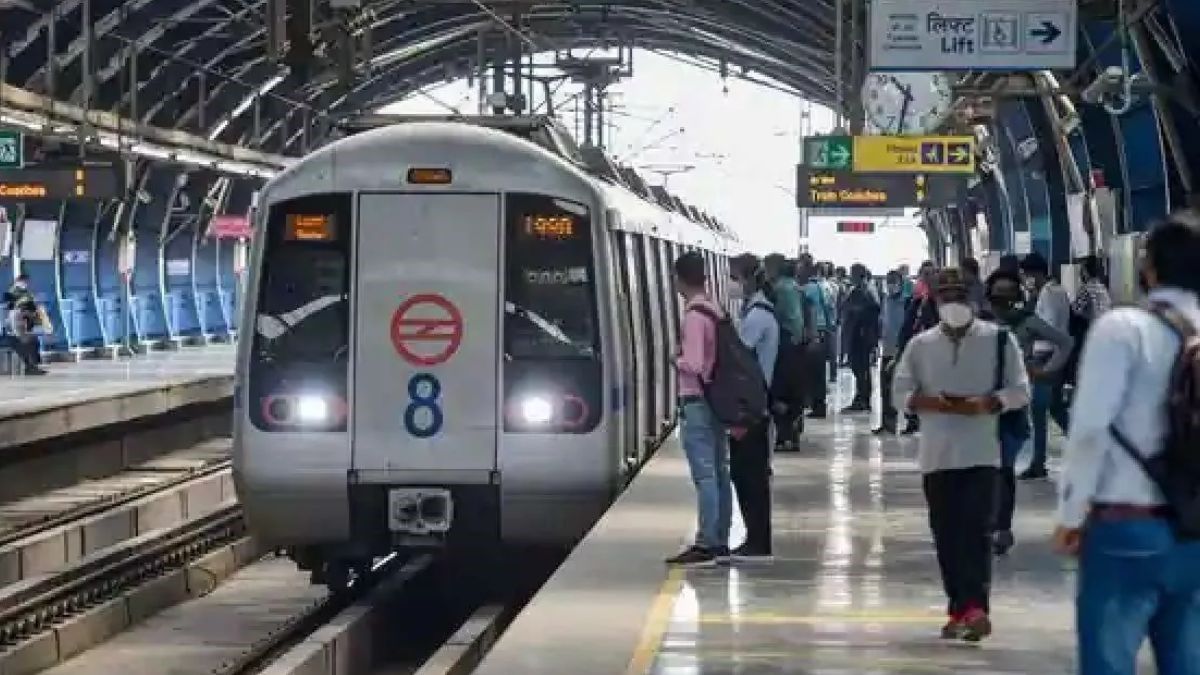Delhi Metro’s Lajpat Nagar-Saket G Block Corridor: A Look at Preparations and Development
The Delhi Metro Rail Corporation (DMRC) is gearing up for the construction of the much-anticipated Lajpat Nagar-Saket G Block corridor, even before the tender has been officially issued. This proactive approach demonstrates DMRC’s commitment to minimizing disruptions during the construction phase, reflecting a strategic plan to expedite the project. The preparations underway include crucial infrastructure adjustments aimed at easing potential traffic congestion and ensuring smooth project execution. This proactive planning showcases the DMRC’s meticulous approach to major infrastructural development in the capital city. This article explores the current stage of preparation, planned scope, and the overall significance of this new corridor to Delhi’s transport network.
Road Widening and Infrastructure Development
Preparing for Construction
A key element of the preparatory work is the widening of roads along the proposed corridor route. This initiative, primarily focusing on Birla Vidya Niketan Marg (connecting Pushpa Bhawan and Saket G Block), is crucial to mitigate traffic congestion that may arise from construction activities. By increasing the road width proactively, the DMRC aims to ensure minimal disruption to commuters and the surrounding areas. This preventative measure highlights the organization’s consideration for public convenience and effective project management. The successful completion of road widening is projected to enhance traffic flow and ensure the construction of the metro line is completed as smoothly as possible.
Timeline and Completion
The DMRC anticipates completing the road widening project within six months of the tender’s issuance. This aggressive timeline signifies a dedication to timely execution and adherence to the project’s schedule. Such an approach reflects the organization’s dedication to infrastructure improvement and minimal disruptions, which emphasizes its efficiency and commitment to completing the Lajpat Nagar-Saket G Block Metro corridor within the given time constraints. This swift action underpins the DMRC’s aim to maintain the momentum, ensuring minimal delays in starting the main construction of the Metro corridor once the official tender is awarded.
Lajpat Nagar-Saket G Block Corridor: Scope and Features
Proposed Length and Stations
The proposed Lajpat Nagar-Saket G Block corridor will span 38 kilometers and consist of nine elevated stations. These stations will cater to a wide range of localities, providing essential connectivity and access to crucial areas. The inclusion of stations at Lajpat Nagar, Andrews Ganj, Greater Kailash-1, Chirag Delhi, Pushpa Bhawan, Saket District Center, Pushp Vihar, and Saket G Block indicates strategic planning in connecting residential and commercial areas in the South Delhi region. This strategically placed network of stations intends to optimize transport convenience for a vast number of residents and office workers.
Strategic Route Planning
The route is designed to provide efficient connectivity, addressing existing transportation challenges. The thorough planning suggests a focused approach on optimizing traffic flow and minimizing inconvenience. This proactive development ensures the enhancement of overall transportation connectivity, reducing travel times and optimizing public transit within and across these key localities. This design directly tackles transportation demands, showcasing its practical impact on reducing commuting challenges.
Bahadurgarh to Assoda Metro Line Extension: Parallel Developments
Though separate from the Lajpat Nagar-Saket G Block project, the proposed extension of the metro line from Bahadurgarh to Assoda highlights a broader trend of Delhi Metro expansion. The fact that both projects are underway suggests the state’s aggressive push to improve metro transit options. Significant progress has been made. This concerted effort exemplifies a continuous and widespread commitment to advancing Delhi’s public transport infrastructure. These separate yet complementary projects reflect a broader and ambitious approach towards modernization and enhancement of public transportation infrastructure across the region.
Ridership Survey and Future Plans
A ridership survey conducted by Haryana Mass Rapid Transport Corporation (HMRTC) provides the necessary data for making informed decisions. The findings of this survey will serve as the basis for a final survey, indicating a methodical approach toward future expansion of the metro network. The comprehensive methodology and its use of data show an understanding of the potential scale of use that an extension of the line to Assoda might have. It further points to ongoing collaboration between state and union ministers towards realizing improvements to the greater region’s transportation infrastructure.
Takeaway Points
- The DMRC’s proactive approach to the Lajpat Nagar-Saket G Block corridor, including road widening before the tender issuance, showcases efficient project management and a commitment to minimizing construction disruptions.
- The proposed corridor, spanning 38 kilometers with nine elevated stations, will significantly enhance connectivity in South Delhi.
- The parallel development of the Bahadurgarh to Assoda metro extension highlights a larger strategy of expanding Delhi’s metro network, serving a wide range of locations.
- The use of ridership surveys underscores a data-driven approach to infrastructure planning, ensuring the effectiveness and relevance of metro line extensions.




